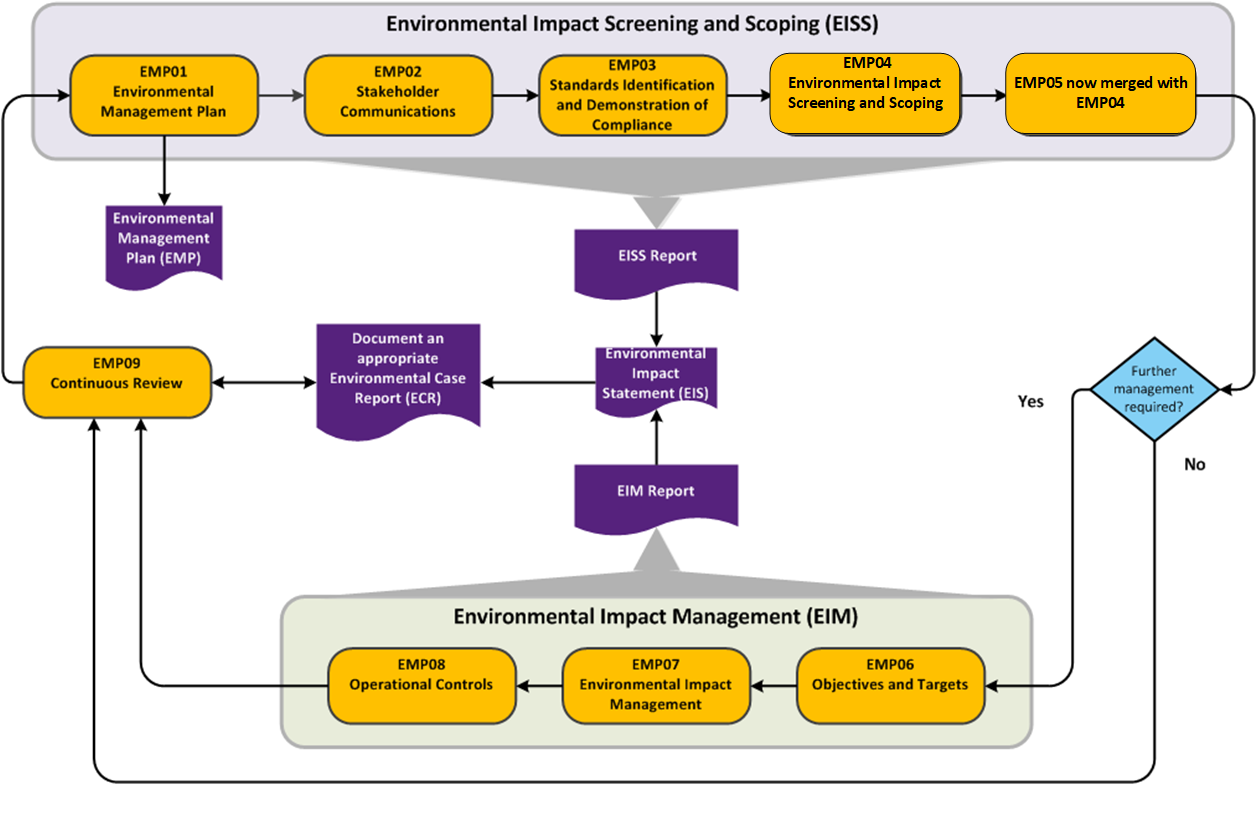ASEMS Part 2 - Guidance
Primary tabs
Secondary tabs
Overview
The Project Oriented Environmental Management System (POEMS) provides a robust methodology for the environmental management of equipment, platforms and services during their lifecycle.
The key aim of the POEMS is to enable MOD acquisition teams to eliminate or minimise adverse environmental impacts whilst exploiting positive impacts, within the acqusition cycle.
The POEMS enables projects to discharge their delegated responsibilities and satisfy the requirements defined in Legislation, Departmental Policy and Domain-specific Defence Regulations. The POEMS reflects the principles of ISO14001, allowing effective read across for industry.
The POEMS performs a crucial role in ensuring that the MOD meets its sustainable development and sustainable procurement goals. Equally, sustainable development and sustainable procurement activity will enhance the POEMS activities. For example, the outputs of a POEMS assessment undertaken during the “Concept” lifecycle stage can inform sustainable procurement activity and consequently eliminate or reduce anticipated environmental impacts within the procurement cycle (targeted contract management and enhanced design options etc.).
The POEMS highlights the importance of identifying and consulting with stakeholders and Subject Matter Experts (SMEs) so that projects can effectively discharge their delegated responsibilities.
The scope of the POEMS is limited to acquisition and support projects for equipment, platforms and services. The POEMS does not seek to directly manage operational use of equipment as this is the responsibility of the relevant service. However, the output of the POEMS will inform the operational communities’ management of the environmental impacts arising from equipment use, and any operational mitigation that should be implemented.
The POEMS is designed to encourage a proportional response to the size, complexity and environmental challenge of projects. It follows the rationale of CADMID and is aligned with existing equipment safety management practices and procedures, where practicable. The assessment elements of the POEMS have also been developed to be consistent with current processes and procedures operated elsewhere within the Ministry of Defence (MOD).
As POEMS undergoes any major revision a Transition Document will be released to support the update. Transition Documents can be found within Supporting Documents.
Fig 1: POEMS Overview

Environmental Management Procedures
EMP01
Environmental Management Plan
A fully resourced plan to manage potential impacts to the environment should be developed. It is likely that aspects will be known to the Delivery Team prior to commencement of the POEMS Process. This procedure should allow the Delivery Team to budget, resource tasks that may be required to assess the significance of the impacts from the project and to demonstrate that any significant impacts are minimised or reduced, as far as reasonably practicable.
EMP02
Stakeholder Communications
This procedure will enable the Delivery Team to ensure that environmental issues are appropriately managed, with all environmental responsibilities communicated. EMP02 will assist the Delivery Team in identifying stakeholders, define and agree project environmental responsibilities, produce an effective communication plan and assemble an environmental committee.
EMP03
Standards Identification and Demonstration of Compliance
It is important to identify environmental standards that apply to projects in order to demonstrate compliance. This procedure better enables Delivery Teams to identify relevant environmental standards and requirements, understanding how compliance is achieved and how compliance arguments should be built and recorded.
EMP04
Environmental Impact Screening and Scoping
This procedure describes how to carry out a screening and scoping exercise to identify the project’s actual and potential environmental impacts and prioritise impacts according to environmental significance, business risk and ability to influence operational controls, allowing Delivery Teams to decide where to focus their efforts.
EMP05
Impact Priority Evaluation now merged with EMP04
This procedure, EMP05. Impact Priority Evaluation, has now been merged with EMP04. A new EMP05 is under development and information on its release will be provided in due course.
EMP06
Objectives and Targets
Setting objectives and targets are vital in helping to maintain environmental performance and drive continuous improvement. This procedure should help Delivery Teams identify objectives and targets related to impacts or aspects assessed as medium or high priority.
EMP07
Environmental Impact Management
This procedure focuses on the management and reporting of high and medium priority environmental impacts associated with the project.
EMP08
Operational Controls
An operational control exists to ensure an activity is completed in the correct/desired way. This procedure should assist Delivery Teams in identifying where operational controls are required and checking the adequacy of operational controls.
EMP09
Continuous Review
Continuous review should ensure that outputs from all EMPs are kept up to date with overall project and other developments. A review should be part of a planned process of the revision of outputs as the project progresses in order to incorporate improved or amended information, or as the result of audit findings. This procedure assists the Delivery Team in continuous review and improvements to their projects



